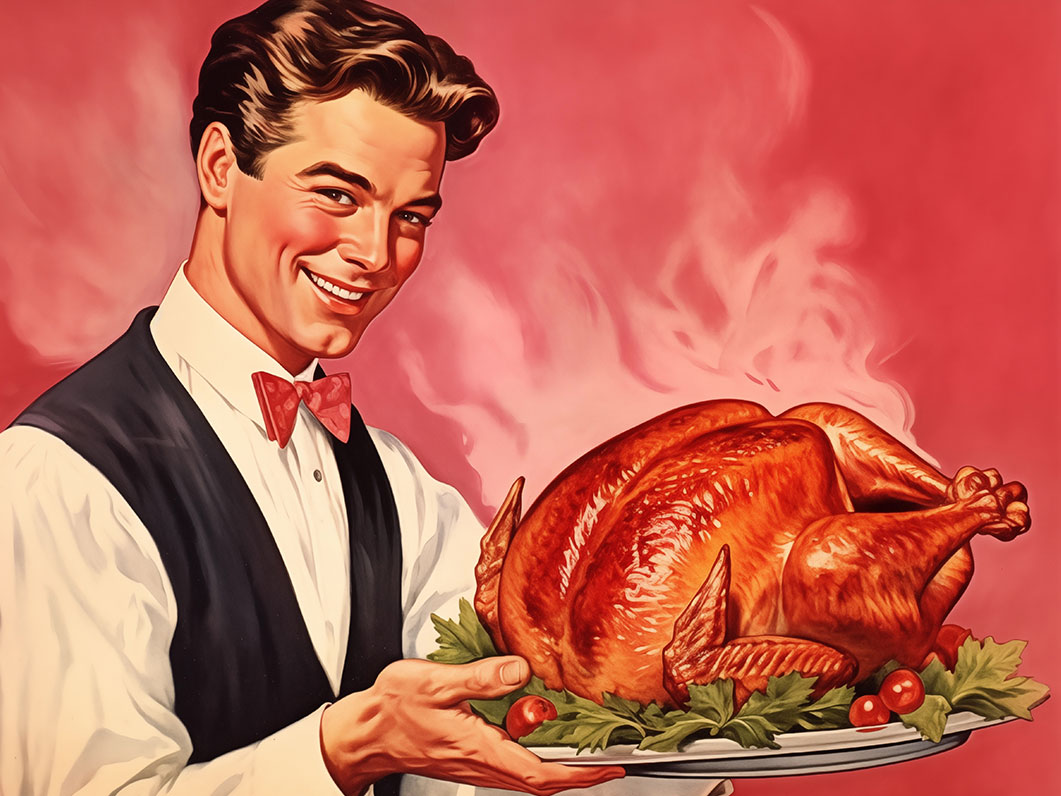With Thanksgiving just around the corner, the U.S. Department of Agriculture (USDA) has shared essential food safety tips to ensure families across America can enjoy a safe and healthy holiday meal. Turkey, the traditional centerpiece of Thanksgiving, brings a unique set of food safety concerns, especially for those new to holiday cooking. From shopping to storing leftovers, following proper guidelines can make all the difference in food safety.
“On the most popular food holiday of the year, we’re reminding consumers to follow safe food handling practices starting at the grocery store and going all the way through enjoying your leftovers,” said Dr. Emilio Esteban, USDA Under Secretary for Food Safety. Here’s a breakdown of the USDA’s recommended practices.
1. Shopping
Choose your turkey and other perishables at the end of your shopping trip to minimize the time they spend in the “Danger Zone” between 40°F and 140°F. If your trip home will take longer than an hour, use insulated bags or coolers to keep food cold. Ensure the turkey packaging is intact and free from leaks to prevent cross-contamination, and keep raw poultry separate from other groceries in your cart.
2. Thawing
To safely thaw a turkey, choose between the refrigerator or cold water methods:
- In the Refrigerator: Allow 24 hours for every 4-5 pounds, keeping the turkey in a dish to contain any leaking juices.
- In Cold Water: Allow about 30 minutes per pound, submerging the wrapped turkey in cold water and changing the water every 30 minutes. Cook immediately after thawing.
3. Preparing
Avoid washing your turkey, as it can spread bacteria. USDA research reveals that about 30% of people don’t clean kitchen surfaces properly during meal prep, so sanitize surfaces thoroughly if they come in contact with raw turkey. Keeping raw poultry and its juices away from foods that won’t be cooked will also help prevent contamination.
4. Cooking
No matter the cooking method, use a food thermometer to confirm the turkey reaches an internal temperature of at least 165°F. Measure at the thickest part of the breast, innermost part of the thigh, and the innermost part of the wing. If you choose to stuff your turkey, ensure the stuffing reaches 165°F as well.
5. Serving
Remember the “two-hour rule” for perishable foods left at room temperature; they should be discarded after two hours. Keep hot foods at 140°F or above by using warming trays, slow cookers, or chafing dishes, and keep cold foods below 40°F by using ice or serving in smaller, refrigerated portions.
6. Leftovers
Refrigerate leftovers within two hours to prevent bacterial growth, carving the turkey into smaller portions to cool it more quickly. Store leftovers in shallow containers to ensure they cool evenly. Discard any food that has been at room temperature for over two hours.
If you have any questions, the USDA’s Meat and Poultry Hotline (1-888-MPHotline) offers assistance from 10 a.m. to 6 p.m. ET, Monday through Friday, and from 8 a.m. to 2 p.m. ET on Thanksgiving Day.
With these tips from the USDA, families can feel confident in their food safety practices, keeping Thanksgiving both delicious and safe. For more information, follow USDA updates on social media or visit the USDA Food Safety and Inspection Service (FSIS) website at www.fsis.usda.gov.



